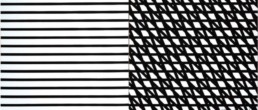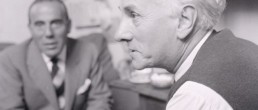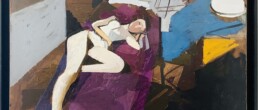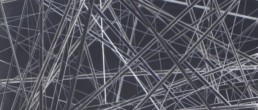Alex Katz
1927 (United-States)
No work available for the moment.
Biography
Alex Katz was born in 1927 in Brooklyn, New York. A year later, in 1928, his family moved to St. Albans, a cosmopolitan suburb of Queens that sprang up between the two world wars. Katz was raised by his Russian emigrant parents, both of whom were passionate about poetry and the arts. His mother having been an actress in Yiddish theater.
In 1946, Katz was admitted to the Cooper Union School of Art in Manhattan. He learned the art of painting from Morris Kantor, who taught him the theories and techniques of modern art. In 1949, after graduating, Katz received a scholarship to study at the Skowhegan School for Painting and Sculpture in Maine, where he was encouraged to paint from nature. This experience was crucial to his development as a painter, and remains an essential element of his practice today. Katz explains that Skowhegan’s outdoor painting gave him “a reason to devote my life to painting”. In 1954, Katz had his first solo exhibition at the Roko Gallery. He develops a circle of acquaintances among the second generation of New York School painters and their allies in other arts. His friends included figurative painters Jane Freilicher, Fairfield Porter and Larry Rivers, photographer Rudolph Burckhardt and poets John Ashbery, Edwin Denby, Kenneth Koch, Frank O’Hara and James Schuyler. From 1955 to 1959, after a day of painting, Katz created small collages of figures in landscapes from strips of paper cut and colored by hand. In the late 1950s, he became increasingly interested in portraiture, painting his friends, especially his wife and muse, Ada. Katz began to use monochrome backgrounds, which would become a defining characteristic of his style, anticipating Pop Art and distinguishing him from the gestural figure painters and the New Perceptual Realism. In 1959, Katz produced his first painted cut-outs. At first, these works were cut from canvas and mounted on profiled wood; soon, he began to paint them directly on the cut wood. In the 1960s, he adopted the technique of direct painting on shaped aluminum plates, which he continued to use throughout his artistic life, creating a series of free-standing or wall-hung portraits that occupy real space.
In the 60s, influenced by film, television and advertising, Katz began creating large-scale paintings, often with dramatically framed faces. In 1965, he embarked on a prolific career as an engraver, producing numerous editions in lithography, etching, silkscreen, woodcut and linoleum. From 1964 onwards, Katz increasingly painted groups of figures, depicting the social world of the painters, poets, critics and other colleagues around him. He also designed sets and costumes for choreographer Paul Taylor and painted numerous images of dancers. In the 80s and 90s, Katz concentrated on large-scale landscape paintings, which he described as “environmental”. The viewer feels enveloped by nearby nature, rather than observing a scene from afar. Katz begins each canvas with an idea of the landscape, then seeks to find the image in nature. He loosens the edges of the forms in his landscape paintings, executing the works with greater pictorial finesse than before. In 1986, Katz began painting a series of nocturnal pictures, exploring a new type of light. Variations on the theme of light falling through branches appear in his work throughout the 90s and into the 21st century. In the early 2000s, Katz also began to paint flowers in abundance, covering canvases with blooms similar to those he had first explored in the late 60s when he painted large close-ups of single flowers or small clusters.
Since 2010, Katz has reoriented his subject matter with more radical cropping of individual portraits. He has also begun to create multiple portraits using images of the same subject cropped very narrowly and arranged in sequence on the canvas. Since 2015, Katz often begins his creation by taking photographs using his iPhone, which he then prints, cuts out and assembles into compositions. From these maquettes, he can make pictorial studies or move straight on to creating a large-scale caricature, from which he paints an oil on canvas. During a long stay in Pennsylvania, from spring to early summer 2020, Katz produced over 50 paintings, mainly of flowers and landscapes he observed around him.






